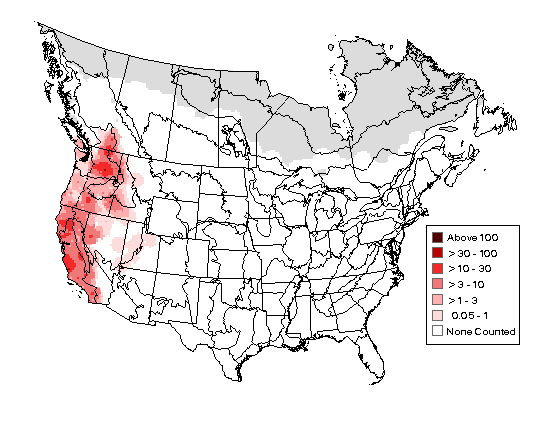Valley Quail

Valley Quail Male
The California Valley Quail, Callipepla californica, also known as the California Quail or Valley Quail, is a small ground-dwelling bird in the New World quail family and is the state bird of California.
The habitat of the Valley Quail is found in they dry, scrub area in the south portion of their range, north through grasslands and orchards to the very wet Pacific Northwest. The California Quail is a highly sociable bird that often gathers in small flocks known as coveys.
Their diet consists mainly of seeds and leaves, but they also eat insects and berries are a common food source
Valley Quail ore often confused with the Gambel's Quail at first glance, but closer observation shows that the male is slightly smaller, but share the tear-drop shaped, black crest. The face and throat is black, bordered a white stripe above the eye and along the throat; there is a small patch of yellow feathers at the base of the bill. The back of the neck and head is finely mottled with black, gray and white, the breast and upper back bluish-gray. Valley Quail have a curving crest or plume, made of six feathers, that droops forward, black in males and brown for females, the flanks are brown with white streaks. The belly has a blackish-chestnut patch that is surrounded by black buff feathers that give a scaly appearance not seen in the Gambel.

California Valley Quail Egg
The breeding season for the Valley Quail April to June with a clutch size of 12-14 eggs. Incubation period of 22 to 23 days at 99.5° and 60 to 65% Humidity, stop turning on the 20th day and raise humidity to 80 to 85%. The nest is a shallow scrape lined with vegetation on the ground beneath a shrub or other cover. Once they are hatched, both parents look after the young.
The range of the Valley Quail is from British Columbia south through California, eastward into Idaho and Nevada.

California Valley Quail Map
Map Source USGS
